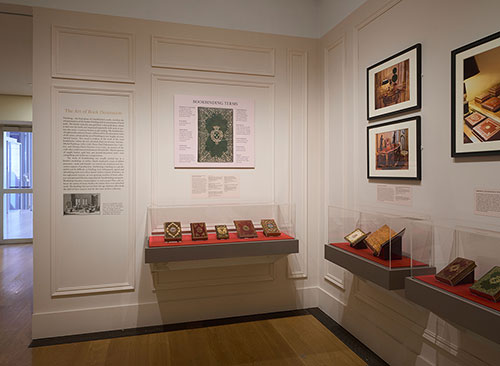Finishing—the final phase of a bookbinder’s work—involves the ornamentation of the leather binding with an assortment of hand tools. The binder typically uses gold leaf, a thin gold sheet, which is laid over the book and impressed repeatedly with tools to pattern the cover—a process known as gilt tooling. The bookbinders of eighteenth-century France, influenced by the decorative styles of the times, advanced the art of finishing to new heights of ornamental luxury. This trend is evident in the work of the royal bookbinder (relieur du roi), of which three are of note: Antoine-Michel Padeloup (1685–1758), Pierre-Paul Dubuisson (act. 1746– 62), and Nicolas-Denis Derome (1731–1790). As masters of the craft, they could turn an inchoate set of materials—blank expanses of supple leather, gold leaf, and myriad decorative tools—into compelling and exuberant compositions.
The work of bookbinding was usually carried out in a binder’s workshop, or atelier, which employed a team of skilled assistants—male and female—to oversee the technical and decorative aspects of production. Attributing a binding to a specific atelier can be difficult, as bindings were infrequently signed and identifying tools were often shared within a family of binders. In the eighteenth century, an ever-growing number of book collectors and personal libraries expanded the bookbinding enterprise. Workshops became commonplace in and around Paris, and we know the names of many binders for whom there is no identified work. The bindings that survive from this age of plenty reflect both the skill of their creators and the fine taste of their collectors.

